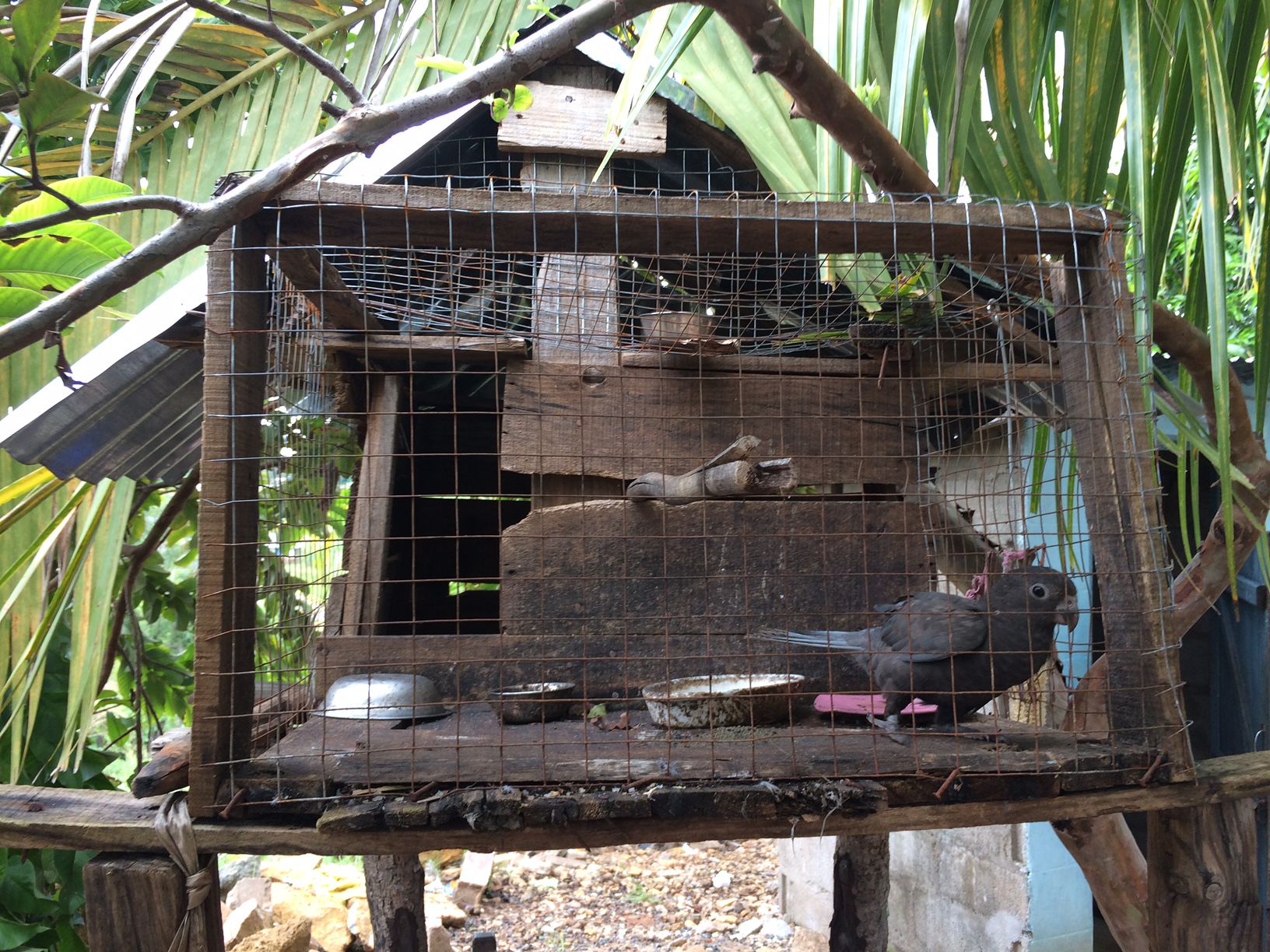A curiosity of evolution: black parrots
Madagascar has many fascinating animals. There is only one thing the island in the Indian Ocean does not have: large, colorful parrots. Instead, evolution has come up with something very special here. In the Malagasy tropics, parrots are completely black.
The unusual birds are called Vasa Parrots. There are different species: One is the Greater Vasa Parrot (Coracopsis vasa). It is divided into three subspecies, two of which occur in Madagascar itself and one on Comoros. Then there is the Lesser Vasa Parrot (Coracopsis nigra), which is also divided into two subspecies. Externally the different species differ mainly in their size. The Greater Vasa grows to about 50 cm long and weighs more than 400g, the Lesser Vasa reaches only 35 cm body height. Suitably to the unusual plumage-color, Vasa Parrots don’t call particularly melodically. Their screaming can be heard wide through the forests. With the calls, one can also well distinguish the Greater from the Lesser Vasa Parrot.

Vasas form small swarms during the day
Vasa Parrots occur on the whole island of Madagascar. They inhabit the very barren south of the island as well as the ever humid east coast, the west, which is dominated by savannah and dry forests, and the humid and warm north. Like almost all parrots, Vasas like to live together in flocks. 10 to 15 birds migrate together during the day. For sleeping and during the search for food, larger flocks of up to 200 Vasas can be found together.
On the menu are mainly fruits and berries, but also many seeds like those of the travelers’ tree, tamarinds, guavas, or mangoes. Malagasy farmers are less likely to be pleased when the smart parrots feast on corn, rice, and manioc. Vasa Parrots prefer to eat unripe fruit. This gives them a food advantage over other birds and rodents that eat on the same trees at a later date.
Mating can take over an hour
The mating season begins with the rainy season from October. Vasa Parrots take great pains to woo the lady they have chosen. They fly to her again and again and even feed her from their beaks. However, both sexes are not really loyal. In each season new pairs are found. It is also not unusual for several males or females to live together in “mixed marriage”. The birds only mate once or twice a day. However, mating can last for over an hour! In contrast to many other birds, male Vasa Parrots have a protruding cloacal part that is inserted into the female’s cloaca. This makes it easier to transfer the semen, which in other birds is only done by briefly pressing the cloacae together.
The female lays two to four eggs. She broods alone, the male does not participate. At least the males provide sufficient food supply. They breed in tree hollows, which are a good fifteen meters above the ground. This enormous height protects the chicks from nest robbers such as the Malagasy Tree Boa. Mostly, the females lose feathers on their heads during breeding. They then look as if their head has turned orange. In reality, the scalp just shimmers through. The brood is unusually short for parrots: it only takes a little over two weeks for the young Vasas to hatch. Greater Vasa Parrots can live up to 50 years.

Vasas are among the smartest parrots in the world
Vasa Parrots like to examine their surroundings and love to try new things. In 2015, Vasa Parrots were first observed in a zoo to learn how to use tools. Individual birds found out how to scrape mussel shells or break out small pieces of shell with the help of small pebbles to get the important calcium. Vasa Parrots thus belong to only three of the approximately 300 existing parrot species that have been observed to use tools.
Because of their high intelligence, these parrots are often kept as entertaining pets in Madagascar. They are wild-caught, sold for very small amounts of money, and then mostly eke out their existence individually in tiny hovels. Both the catch in the wild and the questionable keeping are officially illegal in Madagascar, but infringements are hardly ever punished. Particularly in the west and south of the island, where the dry season can be very long, Vasa Parrots are also hunted for consumption from time to time.
In order to observe Vasas, one should consider suitable travel time. In the national parks Ankarafantsika, Tsingy de Bemaraha, and Tsimanampetsotsa they can be observed particularly well. We can also recommend the protected areas Anjozorobe-Angavo, the Kirindy Reserve, and observation from a boat driving along the Tsiribinha.
- Voices of Greater Vasa Parrots
- Voices of Lesser Vasa Parrots
- Pictures and videos of Vasa Parrots on eBird
 MADAMAGAZINE Your Magazine about Madagascar
MADAMAGAZINE Your Magazine about Madagascar




